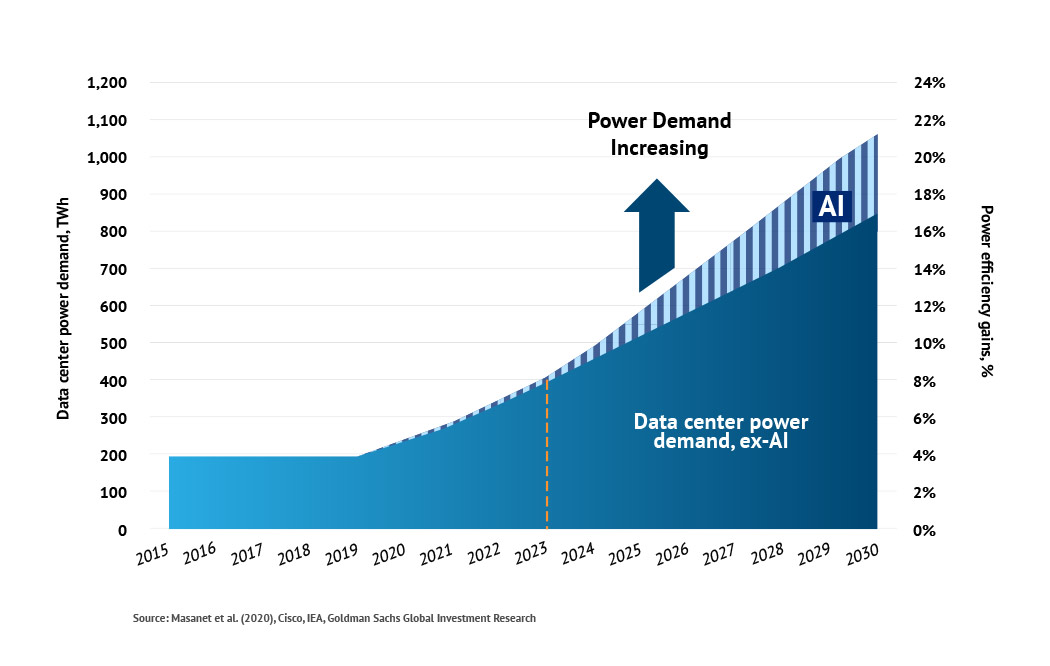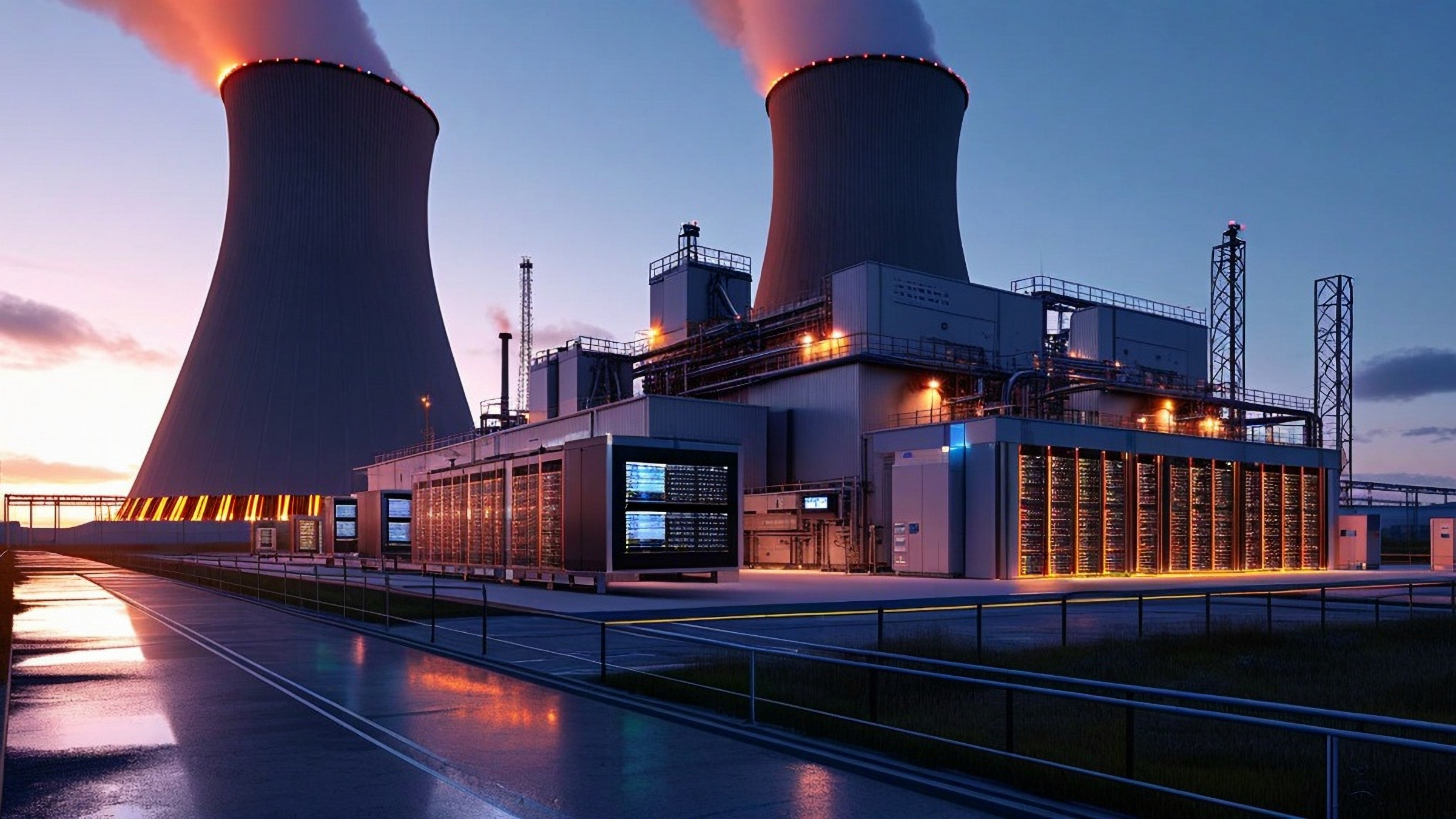Energy Demands and Sources for AI Data Centers and Quantum Computers
Here's a comprehensive overview based on recent data as of October 2025. I'll break it down by topic, drawing from reports by organizations like the International Energy Agency (IEA), academic papers, and industry analyses. Projections indicate rapid growth in energy needs, particularly for AI, with nuclear power emerging as a key solution to meet baseload demands while addressing environmental concerns.
Energy Demands for AI Data Centers

navitassemi.com
The state of AI: Global energy consumption from data centers is forecast to break 1 Petawatt-hour by 2026, how is the semiconductor industry responding? - Navitas
AI data centers are experiencing explosive growth in energy consumption due to the computational intensity of training and running large models. In 2024, global data centers consumed about 415 terawatt-hours (TWh) of electricity, accounting for roughly 1.5% of worldwide usage. The United States alone represented the largest share of this demand. AI has historically driven 5-15% of data center power use, but this could rise to 35-50% by 2030 as models become more complex.
Projections show global electricity consumption for data centers doubling to around 945 TWh by 2030 in baseline scenarios. In the US, AI-driven demand could surge more than thirtyfold to 123 gigawatts (GW) by 2035, equivalent to powering millions of homes. For context, training a single large AI model in 2025 might require up to 25.3 megawatts (MW) of power. AI could account for up to 49% of total data center power by the end of 2025, excluding cooling and other overheads.
YearGlobal Data Center Consumption (TWh)AI Share (%)Notes|
| 2022 | 240-340 | 5-15 | Pre-AI boom baseline. | | 2024 | 415 | 10-20 | US leads with high growth. | | 2030 | ~945 | 35-50 | Doubling driven by AI expansion. | | 2035 | N/A (US: 123 GW) | Up to 50+ | Potential for 9% of US electricity. |
Regional examples include Phoenix data centers drawing 1.5 GW in 2024, highlighting localized strain on grids.
Energy Demands for Quantum Computers

pasqal.com
Quantum Computing : Rethinking Energy Consumption - Pasqal
Quantum computers currently consume far less energy than AI data centers on a per-system basis, but their demands are nuanced due to cooling requirements. A typical quantum processor itself uses minimal power—often in the kilowatt range, comparable to a household oven. However, cryogenic cooling to near-absolute zero temperatures can dominate, with error correction potentially accounting for up to 90% of total energy use.
For specific tasks, quantum systems can be exponentially more efficient. For instance, Google's Sycamore quantum processor completed a task in 200 seconds using about $0.20 in energy, versus $100,000 for two days on the Summit supercomputer (which consumes 504 MWh daily). Research suggests quantum computing could use 1,000 times less energy than classical systems for certain problems, offering an "energy-consumption advantage." However, for simpler tasks, classical computers remain more efficient, sometimes using 155,000 times less energy.
As quantum scales, energy use may increase disproportionately with algorithm complexity, but hybrid quantum-AI systems could reduce overall data center consumption by optimizing workloads.
AspectQuantumClassical Equivalent|
| Base Power | Kilowatts (processor) | Megawatts (supercomputers) | | Cooling Overhead | High (90% of total) | Moderate | | Efficiency for Complex Tasks | Up to 1,000x less energy | Exponential scaling issues | | Example | Sycamore: $0.20 for task | Summit: $100k for same task |
Quantum's potential lies in solving intractable problems efficiently, which could indirectly lower global energy use in fields like materials science.
Energy Sources for AI Data Centers and Quantum Computers

cacm.acm.org
Fulfilling the Growing Power Requirements of AI Datacenters – Communications of the ACM
Data centers, including those for AI and emerging quantum applications, rely on a mix of sources, with a shift toward clean, reliable options. Today, natural gas meets 26% of demand, nuclear 15%, and renewables like solar and wind the rest. Nuclear power is gaining traction for its 24/7 baseload capability, essential for uninterrupted operations. Tech giants like Microsoft, Amazon, and Google are investing in small modular reactors (SMRs) to power data centers directly, viewing nuclear as a clean solution to AI's surge.
Other options include renewables (solar, wind) for sustainable growth, but their intermittency requires backups like batteries or gas. Some data centers are developing on-site generation to avoid grid strain. Nations like the US, China, and France are prioritizing nuclear for AI infrastructure to ensure reliability.
For quantum, energy sources are similar, but lower overall demands make integration with existing grids easier, potentially leveraging nuclear for stable cooling.
SourceShare (%)ProsCons|
| Nuclear | 15 | Reliable, low-carbon, 24/7 | High upfront costs, regulatory hurdles | | Natural Gas | 26 | Flexible, quick scaling | Fossil fuel emissions | | Renewables | ~59 | Clean, scalable | Intermittent, needs storage | | Other (e.g., Coal) | Minimal | Cheap in some regions | High emissions, phasing out |
Nuclear is seen as key to meeting AI's demands without exacerbating emissions.
Impact on Global Warming and Greenhouse Gases AI data centers contribute to rising emissions through increased power demand and heat generation from cooling systems, potentially adding to grid instability and higher electricity prices. Explosive growth could increase greenhouse gases if reliant on fossil fuels, with tech companies reporting emission spikes from data centers. However, AI tools can mitigate climate change by optimizing energy use elsewhere, potentially reducing global emissions by 5-10% in other sectors.
Quantum computing offers a net positive: It can model climate scenarios faster, optimize greenhouse gas reductions, and enable efficient decarbonization strategies. Hybrid quantum-AI data centers might cut electricity use significantly. Overall, while AI exacerbates short-term warming risks, nuclear-powered infrastructure and quantum efficiencies could lead to long-term reductions in global emissions.
source: Grok |







